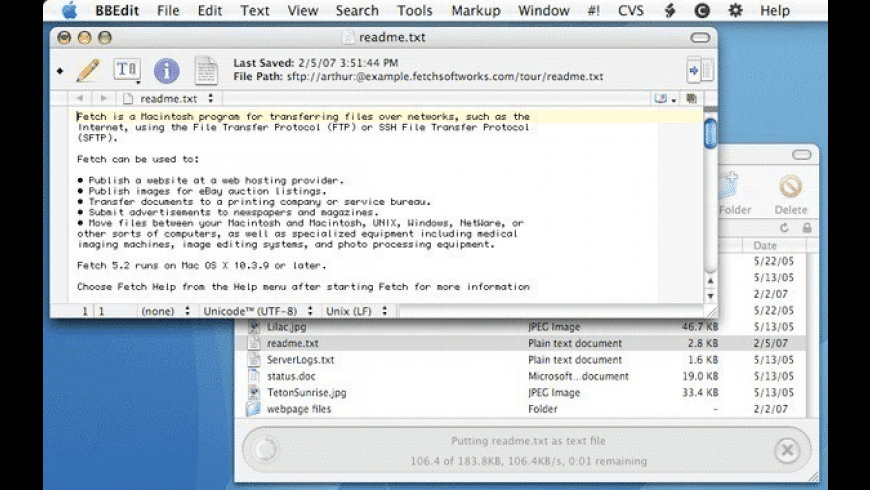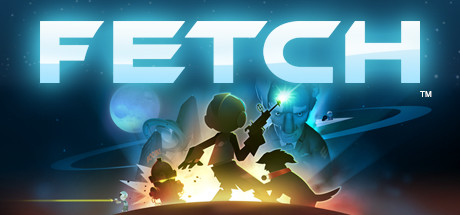JavaScript can send network requests to the server and load new information whenever it’s needed.
Watch 10 All Access on Fetch, with the convenience of Carrier Billing. 10 All Access allows you to stream Channel 10 and CBS shows you love like The Bachelor, and Survivor ad free, plus enjoy subscriber-only original series like The Twilight Zone.10 All Access subscription required. Visit tenallaccess.com.au/tou for full details. Download our free iOS or Android resident app or sign up online. Use address Your new fetch address can be found on your app profile or account settings online. 💰 Download the Fetch Rewards savings app today and start earning rewards and winning gift cards immediately! Experience how easy it is to become a saving.
- Upgrade to Fetch 5.8. If you're a registered user of Fetch 5.5 or later, or you purchased a Fetch license after January 28, 2009, you qualify for a free upgrade — download it now! If you purchased a Fetch license on or before January 28, 2009 you can upgrade to Fetch 5.8 for $10. Learn More and Upgrade Today.
- Free Rewards on Groceries Fetch Rewards.
For example, we can use a network request to:
- Submit an order,
- Load user information,
- Receive latest updates from the server,
- …etc.
…And all of that without reloading the page!
There’s an umbrella term “AJAX” (abbreviated Asynchronous JavaScript And XML) for network requests from JavaScript. We don’t have to use XML though: the term comes from old times, that’s why that word is there. You may have heard that term already.
There are multiple ways to send a network request and get information from the server.
The fetch() method is modern and versatile, so we’ll start with it. It’s not supported by old browsers (can be polyfilled), but very well supported among the modern ones.
The basic syntax is:

url– the URL to access.options– optional parameters: method, headers etc.
Without options, this is a simple GET request, downloading the contents of the url.
The browser starts the request right away and returns a promise that the calling code should use to get the result.
Getting a response is usually a two-stage process.
First, the promise, returned by fetch, resolves with an object of the built-in Response class as soon as the server responds with headers.
At this stage we can check HTTP status, to see whether it is successful or not, check headers, but don’t have the body yet.
The promise rejects if the fetch was unable to make HTTP-request, e.g. network problems, or there’s no such site. Abnormal HTTP-statuses, such as 404 or 500 do not cause an error.
We can see HTTP-status in response properties:
status– HTTP status code, e.g. 200.ok– boolean,trueif the HTTP status code is 200-299.

For example:
Second, to get the response body, we need to use an additional method call.
Response provides multiple promise-based methods to access the body in various formats:
response.text()– read the response and return as text,response.json()– parse the response as JSON,response.formData()– return the response asFormDataobject (explained in the next chapter),response.blob()– return the response as Blob (binary data with type),response.arrayBuffer()– return the response as ArrayBuffer (low-level representation of binary data),- additionally,
response.bodyis a ReadableStream object, it allows you to read the body chunk-by-chunk, we’ll see an example later.
For instance, let’s get a JSON-object with latest commits from GitHub:
Or, the same without await, using pure promises syntax:
To get the response text, await response.text() instead of .json():
As a show-case for reading in binary format, let’s fetch and show a logo image of “fetch” specification (see chapter Blob for details about operations on Blob):
We can choose only one body-reading method.
If we’ve already got the response with response.text(), then response.json() won’t work, as the body content has already been processed.
Response headers
The response headers are available in a Map-like headers object in response.headers.
It’s not exactly a Map, but it has similar methods to get individual headers by name or iterate over them:
Request headers
To set a request header in fetch, we can use the headers option. It has an object with outgoing headers, like this:
…But there’s a list of forbidden HTTP headers that we can’t set:
Accept-Charset,Accept-EncodingAccess-Control-Request-HeadersAccess-Control-Request-MethodConnectionContent-LengthCookie,Cookie2DateDNTExpectHostKeep-AliveOriginRefererTETrailerTransfer-EncodingUpgradeViaProxy-*Sec-*

These headers ensure proper and safe HTTP, so they are controlled exclusively by the browser.
POST requests
To make a POST request, or a request with another method, we need to use fetch options:

method– HTTP-method, e.g.POST,body– the request body, one of:- a string (e.g. JSON-encoded),
FormDataobject, to submit the data asform/multipart,Blob/BufferSourceto send binary data,- URLSearchParams, to submit the data in
x-www-form-urlencodedencoding, rarely used.
The JSON format is used most of the time.
For example, this code submits user object as JSON:
Please note, if the request body is a string, then Content-Type header is set to text/plain;charset=UTF-8 by default.
But, as we’re going to send JSON, we use headers option to send application/json instead, the correct Content-Type for JSON-encoded data.
Sending an image
We can also submit binary data with fetch using Blob or BufferSource objects.
In this example, there’s a <canvas> where we can draw by moving a mouse over it. A click on the “submit” button sends the image to the server:
Please note, here we don’t set Content-Type header manually, because a Blob object has a built-in type (here image/png, as generated by toBlob). For Blob objects that type becomes the value of Content-Type.
The submit() function can be rewritten without async/await like this:
Summary

Download Fetch Api
A typical fetch request consists of two await calls:
Or, without await:
Response properties:
response.status– HTTP code of the response,response.ok–trueis the status is 200-299.response.headers– Map-like object with HTTP headers.
Methods to get response body:
response.text()– return the response as text,response.json()– parse the response as JSON object,response.formData()– return the response asFormDataobject (form/multipart encoding, see the next chapter),response.blob()– return the response as Blob (binary data with type),response.arrayBuffer()– return the response as ArrayBuffer (low-level binary data),
Fetch options so far:
Download Fetch Reward App
method– HTTP-method,headers– an object with request headers (not any header is allowed),body– the data to send (request body) asstring,FormData,BufferSource,BloborUrlSearchParamsobject.
Download Fetch Rewards Apk
In the next chapters we’ll see more options and use cases of fetch.